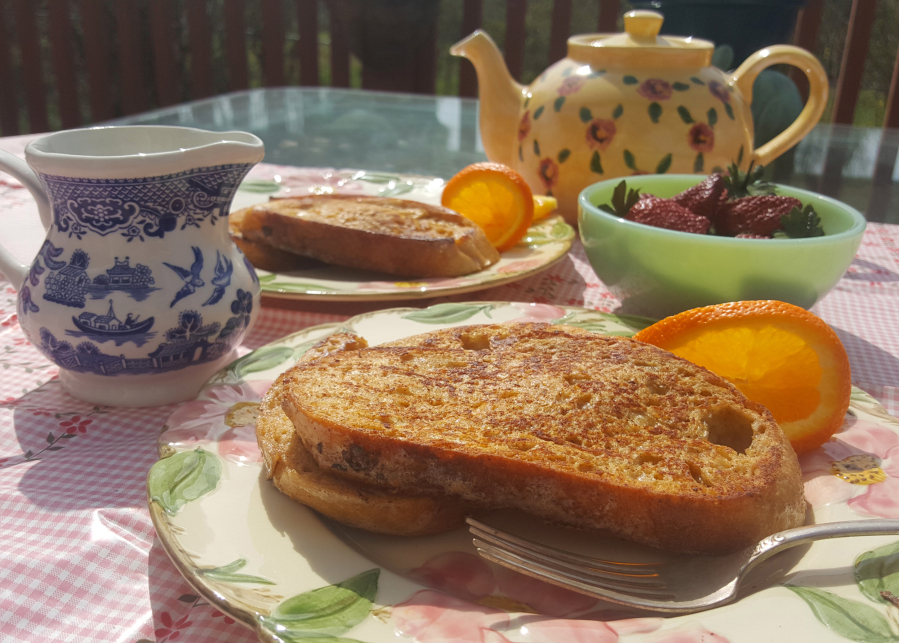Sundays in my childhood home meant something delicious for breakfast. Every other day we had cereal or fried eggs, but Sunday was a time to indulge. Dad usually cooked, to give Mom a break, and he tended to do things in phases. There was the slightly overdone omelette phase (possibly to avoid poisoning us with salmonella from raw eggs), then there was the pancake phase (also a shade browner than necessary, but always delicious), then there were a few months of thick, crunchy cinnamon toast. I think we had a bagel phase at some point, and we sadly skipped waffles altogether, probably due to our lack of a waffle iron manufactured after 1952.
The French toast phase lasted quite a while, to my delight. Dad used whole wheat bread because that’s what we had. Homemade French toast and restaurant-style, white bread French toast seemed like two distant, unrelated creatures. I never even entertained the notion that we could have white bread French toast at home. We might as well have had Peking duck. The idea was that exotic.
I haven’t followed in my dad’s footsteps as far as cooking something special on Sunday, but occasionally I’ll get out the waffle maker (made in 2011!) or indulge my hankering for egg-dipped, cinnamon-laced French toast. I usually make French toast with wheat or oat bread, like my dad, but this week I decided to try my hand at restaurant-style French toast. I consulted my old friend, Madame Internet, to figure out puzzles like optimum bread thickness, cooking temperature, egg-to-bread ratio and egg-to-milk ratio. I learned that Madame I. isn’t always right and sometimes you need to trust your instincts. At any rate, one thing is for sure: Crusty French bread makes the best French toast. Best to stick with the theme.
First of all, a primer: French toast – or freedom toast, if that’s your thing – is basically bread dipped in egg and a little milk and then fried until golden.




